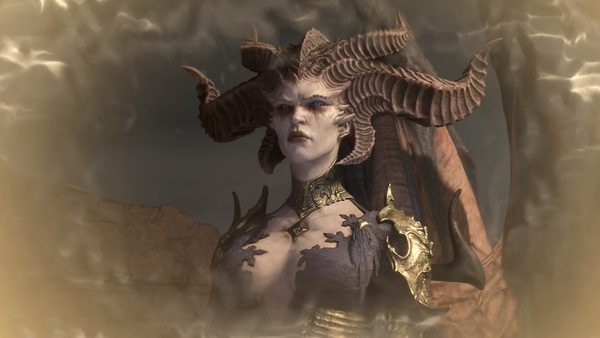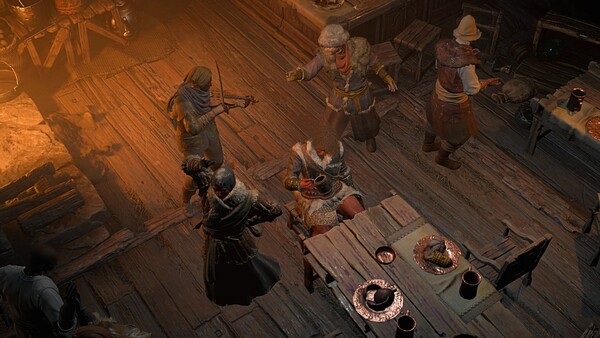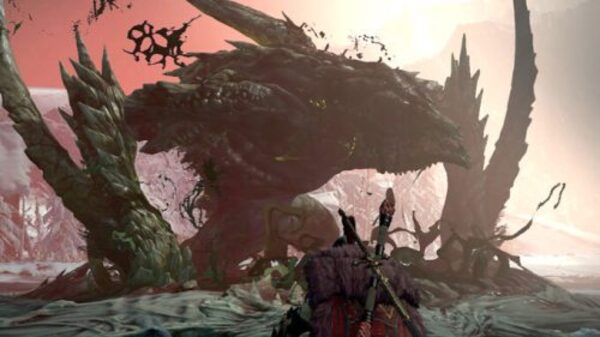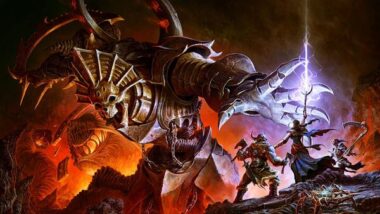Introduction
“Diablo IV” revitalizes the beloved action RPG series with its dark, gritty visuals and dynamic multiplayer features. The game invites players into a shared world filled with fast-paced combat and opportunities for cooperative play. However, maintaining balance in this multiplayer environment poses significant challenges. This article explores the intricate issues of multiplayer balance in “Diablo IV,” focusing on class imbalances, PvP interactions, and the implications of scaling mechanics on the player experience.

The Foundation of Multiplayer in “Diablo IV”
At its core, “Diablo IV” retains the classic hack-and-slash mechanics that define the franchise, while also introducing a more integrated multiplayer experience.
Open World and Shared Spaces
In contrast to earlier titles, “Diablo IV” features an open world where players can encounter each other in real-time. This shared dynamic creates both cooperative opportunities and competitive tensions, presenting challenges for balance, particularly as players of varying levels and abilities converge in the same space.
The Appeal of Cooperative Play
Many players thrive in cooperative environments where teaming up with friends or strangers to tackle challenging dungeons or world bosses is essential. However, the potential for class imbalances can quickly become apparent, as certain classes may dominate in terms of damage output or support roles.
Class Imbalances: Strengths and Weaknesses
One of the most contentious aspects of multiplayer in “Diablo IV” is class imbalance. While each class has unique strengths, some clearly outperform others in various situations, especially in PvP or challenging content.
The Power of Meta-Builds
As with many RPGs, specific “meta” builds often emerge as the most effective ways to play certain classes. These builds typically involve optimized gear and skill combinations that maximize damage or survivability. While these meta builds can provide a competitive advantage, they may render other playstyles less viable, leading to feelings of frustration among players who prefer non-meta approaches.
Support vs. DPS Roles
Some classes in “Diablo IV” focus primarily on support, providing buffs and healing to allies, while others excel at dealing damage. This imbalance can create a frustrating experience for players in multiplayer settings, especially in high-level dungeons or raids, where damage-dealing characters often overshadow support roles.
Scaling Issues: Keeping the Challenge Fair
Effective scaling in multiplayer environments is essential to ensure that players of different levels can play together without one overpowering the other. “Diablo IV” implements a dynamic scaling system, but it often struggles with balance.
Level Scaling in Co-op
When a lower-level player joins a higher-level group, the game scales enemies according to the players’ levels. However, this system is not always seamless. Higher-level players may still deal significantly more damage and sustain less damage in return, making it challenging for lower-level players to contribute effectively. Moreover, scaling issues can lead to bosses or enemies becoming disproportionately difficult for newer players.
Loot Distribution and Fairness
Loot acquisition is a vital part of the “Diablo IV” experience, and the method of distribution impacts balance significantly. Players expect a fair chance at earning high-quality gear, but in multiplayer settings, high-level players frequently dominate damage output, skewing loot rewards in their favor. This can dishearten lower-level players who feel their contributions are overlooked.
The PvP Dilemma: Balancing Player Combat
The introduction of dedicated PvP zones in “Diablo IV” offers exciting competitive gameplay, but balancing these interactions remains a significant challenge.
Class Dominance in PvP
Certain classes excel in PvP combat due to their abilities, mobility, and burst damage potential. For instance, ranged classes can often keep their distance and deal damage from afar, leaving melee characters at a disadvantage. This creates an imbalanced competitive atmosphere, where some players feel their chosen classes are underperforming.
Tuning Abilities for PvP
While abilities may be powerful in PvE, they can become overpowered in PvP scenarios. Blizzard attempts to balance this by adjusting abilities specifically for PvP, but finding the right equilibrium is challenging. Overpowered abilities can make PvP encounters one-sided, while nerfing them too much may render them ineffective in PvE, frustrating players who enjoy both facets of the game.
Player Versus Environment (PvE) Balancing Challenges
In addition to PvP balancing, “Diablo IV” faces significant challenges regarding PvE. The game’s difficulty scaling and enemy mechanics often create imbalances that affect multiplayer dynamics.
Enemy Scaling in Multiplayer Dungeons
In multiplayer dungeons, enemy health and damage scale with the number of players. However, this scaling can sometimes feel unfair. When the system fails to account for class synergies or individual player skill levels, even well-equipped groups may struggle to survive. This imbalance can lead to frustrating defeats in content that should be challenging yet fair.
World Bosses and Multiplayer Coordination
World bosses are a highlight of the multiplayer experience in “Diablo IV,” but they come with their own set of balancing issues. Designed to be tackled by large groups, class imbalances and varying player levels can make these encounters feel lopsided. High-DPS characters often dominate damage, while support roles may feel undervalued.

Gear and Progression Disparities
Another major challenge in “Diablo IV” multiplayer is the disparity in gear and progression among players. The loot system, while exciting, can create substantial power gaps.
The Grind for Gear
Acquiring legendary and high-level gear is a central aspect of “Diablo IV’s” progression system. However, this grind can create power imbalances, with players who invest more time dominating combat. While the pursuit of gear is essential, it can alienate newer or more casual players struggling to keep pace.
Gear-Based Power Gaps
Players with top-tier gear can easily outmatch their less-equipped teammates, making multiplayer content less enjoyable for those still progressing. This power gap becomes especially pronounced in high-level dungeons, raids, and PvP, where gear significantly influences success.
Multiplayer Events: Cooperation vs. Competition
“Diablo IV” features various multiplayer events, including public world events and PvP zones that blend cooperative and competitive gameplay.
Cooperative World Events
World events require players to work together to defeat formidable foes or achieve objectives. While these events promote cooperation, the competitive nature of loot drops and damage rankings can lead to frustration. Players might feel compelled to compete with teammates for top damage or the best rewards, undermining the cooperative spirit.
PvP Zone Dynamics
PvP zones introduce an interesting mix of cooperation and competition. Players may temporarily team up to tackle tougher enemies, only to turn on each other once the threat is eliminated. This dynamic adds tension and unpredictability but exacerbates balancing issues, as certain classes or builds are inherently better suited for PvP.
Class Synergies and Multiplayer Team Composition
Team composition is vital for success in multiplayer, especially in challenging content like high-level dungeons and world bosses.
The Importance of Synergy
Class abilities that work well together create powerful combinations capable of altering the course of battle. For instance, a support class providing healing and buffs can significantly enhance a damage-dealing character’s effectiveness. However, this reliance on synergy can lead to imbalances when teams lack optimal compositions, resulting in frustrating experiences for less-coordinated groups.
The Downsides of Forced Roles
While team synergies can be beneficial, the need for specific roles (tank, DPS, support) can feel restrictive for players who prefer certain playstyles. Many players may feel forced into specific roles based on their class or build, diminishing the freedom to experiment with different styles in multiplayer content.
The Impact of Seasonal Content on Balance
Blizzard’s commitment to seasonal content for “Diablo IV” brings fresh challenges and opportunities for balance.
Seasonal Meta Shifts
Each season introduces new content, including abilities, gear, and challenges. These updates often shift the game’s meta, making certain classes or builds more powerful while nerfing others. While this keeps the game engaging, it can frustrate players who invest time in builds that become less viable with each season.
Adapting to Seasonal Changes
Players must continuously adapt to the evolving balance of power in “Diablo IV,” particularly in PvP and high-level PvE content. While some players enjoy the challenge of adapting to new metas, others find the constant changes disruptive to their progression and overall enjoyment.

Conclusion
Balancing multiplayer in “Diablo IV” presents ongoing challenges for Blizzard. The game’s rich open world and diverse class system offer numerous opportunities for exciting multiplayer interactions, yet these interactions can often be marred by imbalances in class power, gear progression, and scaling mechanics. As developers refine the experience through patches and updates, players must navigate these complexities while exploring the perilous world of Sanctuary. While “Diablo IV” continues to deliver a thrilling multiplayer experience, the quest for balance remains an ongoing endeavor that requires constant attention.


